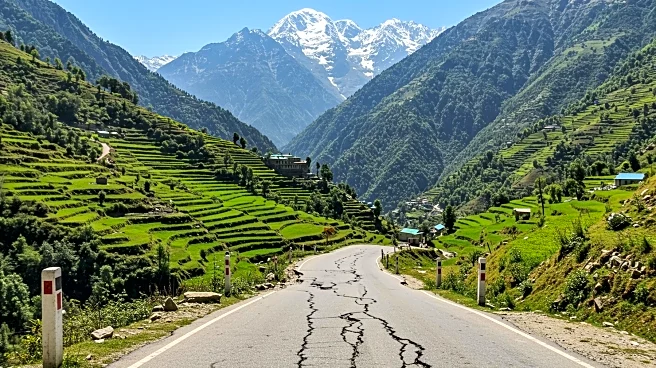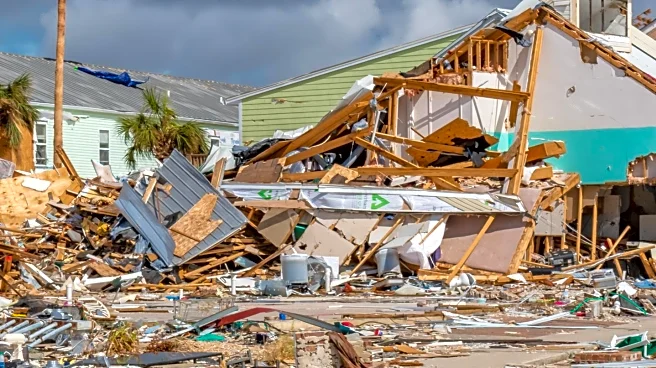What's Happening?
The Kiratpur-Manali National Highway in Himachal Pradesh, once a vital route for tourism and agriculture, has suffered significant damage due to monsoon floods. The highway, particularly the stretch between Mandi and Kullu, has been severely affected by landslides and flooding, disrupting travel and transport. This has led to traffic snarls and cancellations for tourists, while farmers face losses as their produce spoils during transit delays. The highway was initially seen as a boon for the region's economy, facilitating smoother travel and better market access for agricultural products. However, the recent damage has turned it into a troubled corridor, especially during the monsoon season.
Why It's Important?
The damage to the Kiratpur-Manali National Highway has far-reaching implications for the local economy, particularly for the tourism and agriculture sectors. The highway's instability during the monsoon season poses a significant challenge for businesses reliant on tourist arrivals and for farmers needing to transport perishable goods. The situation highlights the vulnerability of infrastructure to natural disasters and the need for sustainable construction practices that consider environmental factors. The ongoing issues with the highway also underscore the importance of developing long-term solutions to ensure reliable transportation routes that can withstand adverse weather conditions.
What's Next?
Efforts to restore the highway are ongoing, with calls for constructing protective galleries or tunnels in landslide-prone areas. Stakeholders are urging for a permanent solution to prevent future disruptions. The National Highways Authority of India (NHAI) is likely to continue its work on stabilizing the road, but the challenging terrain presents significant obstacles. In the meantime, local businesses and farmers may need to explore alternative routes or methods to mitigate the impact of the highway's instability on their operations. The situation may also prompt discussions on improving infrastructure resilience in other vulnerable regions.












